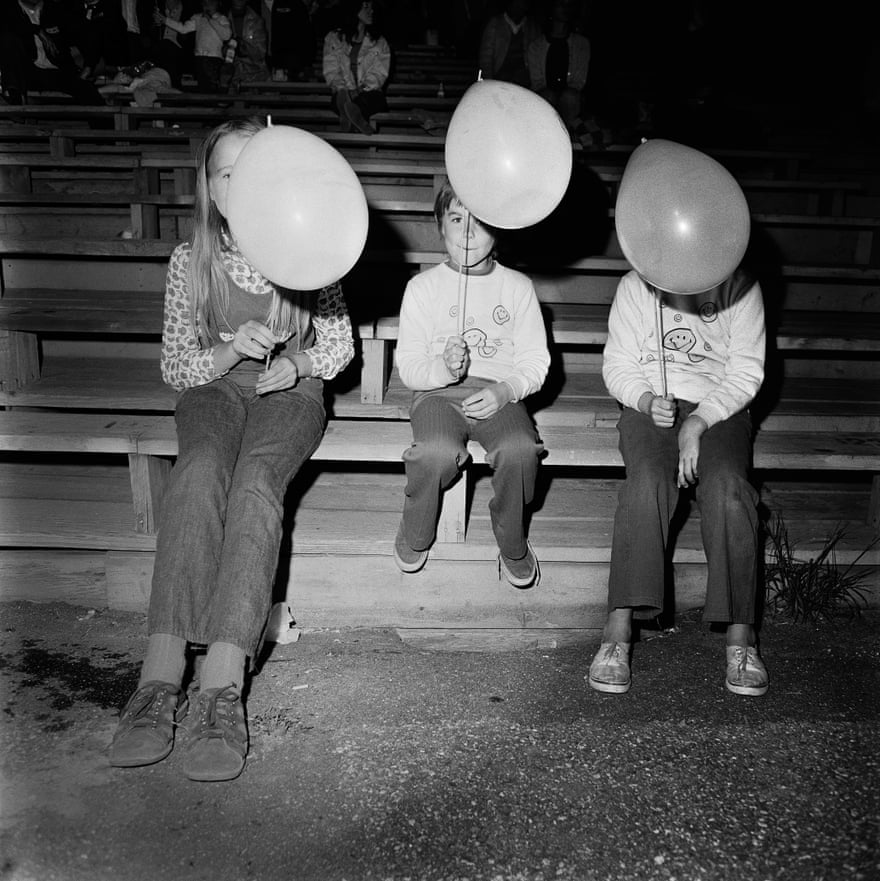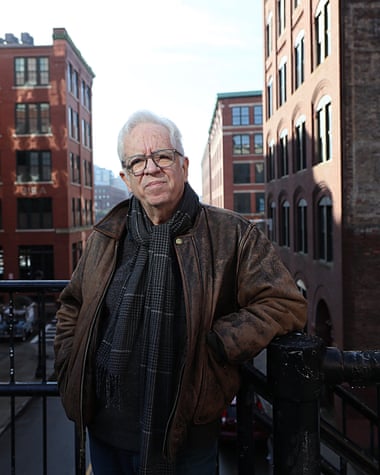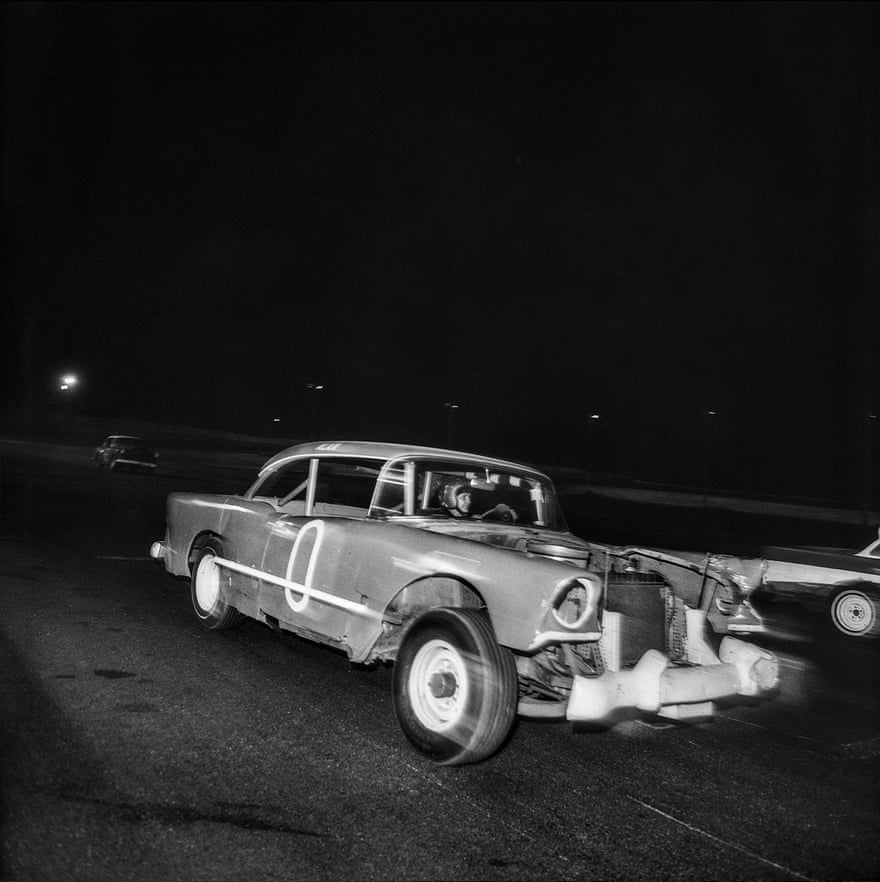Henry Horenstein was a student at the University of Chicago in the 1960s when he discovered the work of the leftwing English historian EP Thompson. Soon afterwards, on the advice of his tutor, he journeyed to England and enrolled for a term at the University of Warwick, where Thompson was a lecturer.
“I went specifically to study with him, having read his book The Making of the English Working Class,” Horenstein tells me over the phone from his home in Boston. A few years later, when his interest shifted from history to photography, Thompson would still be as big an influence on Horenstein’s work as the esteemed photographers he studied under at the Rhode Island School of Design – the likes of Aaron Siskind, Harry Callahan and Minor White. “I soon figured out that the life of a historian was pretty dull, whereas the life of a photographer wasn’t,” Horenstein says, laughing. “But what Thompson taught me, I tried to bring to my photography. I sought out working people whose voices would not usually get out there.”
Since then, Horenstein has amassed a huge archive of images of mostly “ordinary” people and published several photo books on American working-class pursuits such as baseball, horse racing and country music. Now comes Speedway 1972, an early series of evocative black-and-white portraits shot at stock car racing events at circuits in Seekonk, Massachusetts and Thompson, Connecticut. “What I’m drawn to is community,” he says, citing his brother-in-law, a speedway driver, as his original conduit to this grassroots culture of battered cars and reckless velocity.
“I was still in grad school and I was looking for an opportunity,” he writes in his short introduction. “There had to be good pictures for a historian-with-a-camera in training.”
The passage of time has imbued his portraits with an even deeper aura of authenticity, not least because Horenstein’s ordinary people – blue-collar, white, small-town – hail from a time when classic American workwear was practical rather than fashionable. Many of the men wear grime-stained T-shirts, shapeless work trousers and heavy boots while the young favour denim and plaid, their unruly hairstyles a testament to the lingering legacy of the hippy 60s. Teenage couples and groups of youngsters attest to the fact that stock car racing provided a family night out in provincial communities where the best drivers were often local heroes.
Though the series is punctuated with images of beat-up cars and proudly posing drivers, it is the punters that Horenstein mostly trains his eye on, framing his subjects in complete darkness or against the silhouettes of makeshift buildings and rows of half-empty wooden benches. Their presence is starkly dramatic, even if many seem gauche and awkward in front of his camera. “I did the series when I was a baby photographer and still in awe of my heroes.” he says, referring to Usher “Weegee” Felig and Gyula “Brassaï” Halasz, the two iconic night photographers to whom he has dedicated the book.

Though he is primarily a portrait photographer, Horenstein’s work is also characterised by a profound sense of place. For his best-known book, Honky Tonk, first published in 2003 and reissued in an extended edition in 2012, he made formal portraits of country icons such as Waylon Jennings, Dolly Parton and Ralph Stanley, but also lesser-known performers like the Willis Brothers, who sometimes provided backing for the great Hank Williams, and DeFord Bailey, a pioneering prewar African American country musician and founding member of the Grand Ole Opry, the famous country music venue in Nashville. He also photographed people queuing outside the Opry in their country and western finery, and the denizens of down-home bars such as Tootsie’s Orchid Lounge in Nashville and the Hillbilly Ranch in Boston. One particularly atmospheric image is called Drunk Dancing, Merchants Cafe, Nashville.

“You had to be quick, but that was OK,” he says of his fly-on-the-wall approach not just to to documentary but also portraiture. “The performers didn’t tend to give me much time. But I was not that interested in getting into their world and they were not interested in mine. I’m an observer. That’s what has worked for me.”
Horenstein’s interest in music dates back to his time at Warwick in the mid-60s, when he would travel to London most weekends to immerse himself in the city’s burgeoning folk scene. “I went to so many small bars and function rooms with folding chairs to see the likes of Bert Jansch. Towards the end of my time there, he had formed Pentangle. I remember there was a photographer who would shoot the performers and then bring the prints back the following week and sell them. Looking back, that too that may have made me think about photography as a way of making a living.”
Back then Horenstein had no idea there was a distinction between documentary and art photography. “There just wasn’t much art photography being made. Everyone wanted to be a member of [photo agency] Magnum; they weren’t interested in museum shows.” His images, though resolutely traditional, resonate across the years, both in their formal starkness and their insistence on the importance of the ordinary and the communal.
Recently, when he showed the speedway series to some of the students he teaches at the Rhode Island School of Design, a young girl instantly recognised one of the locations as her hometown of Thompson. “It turns out that her grandfather and the owner of the racetrack were fishing buddies.” he says. “She took the pictures back there with her and managed to get about 80% of the people in them identified, because hardly anyone left that little town.”
The Thompson speedway track is still operating, he tells me, but the sport is not as popular as it was in its heyday. In the interim, the photographs have assumed a social and historical importance. “They are a records of a local community from another time. An almost lost time.” EP Thompson, one senses, would have approved.

